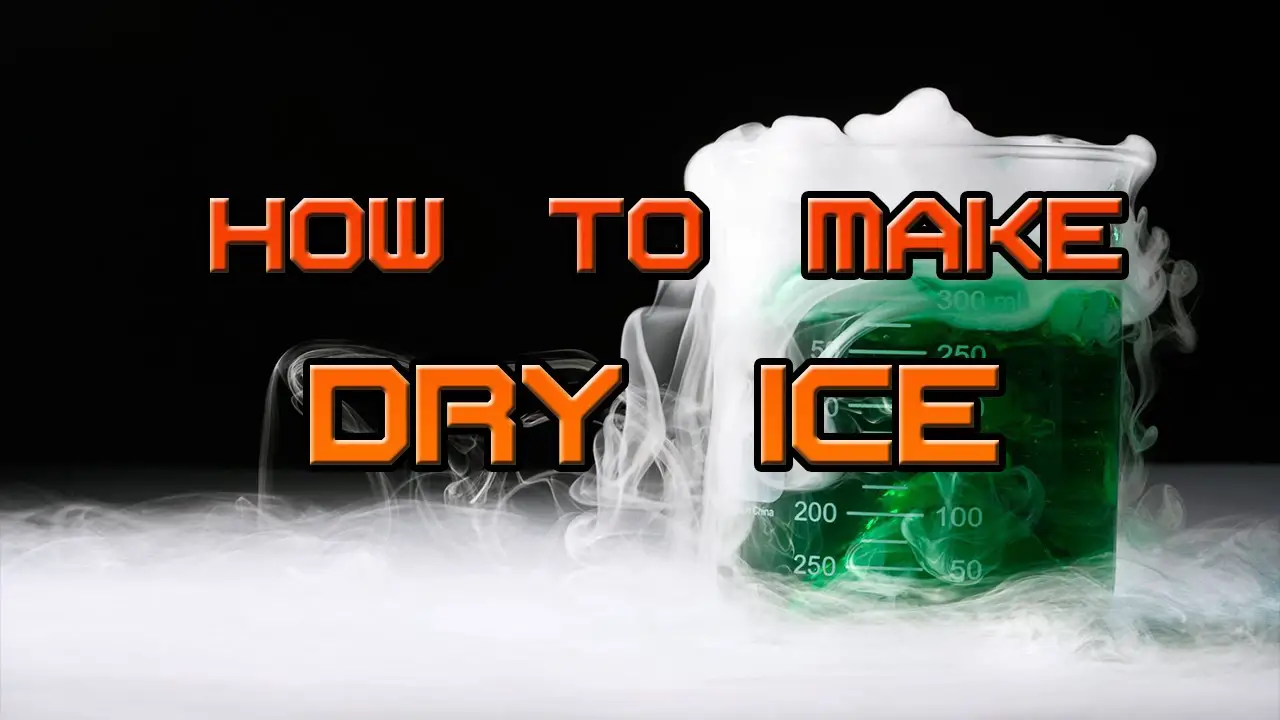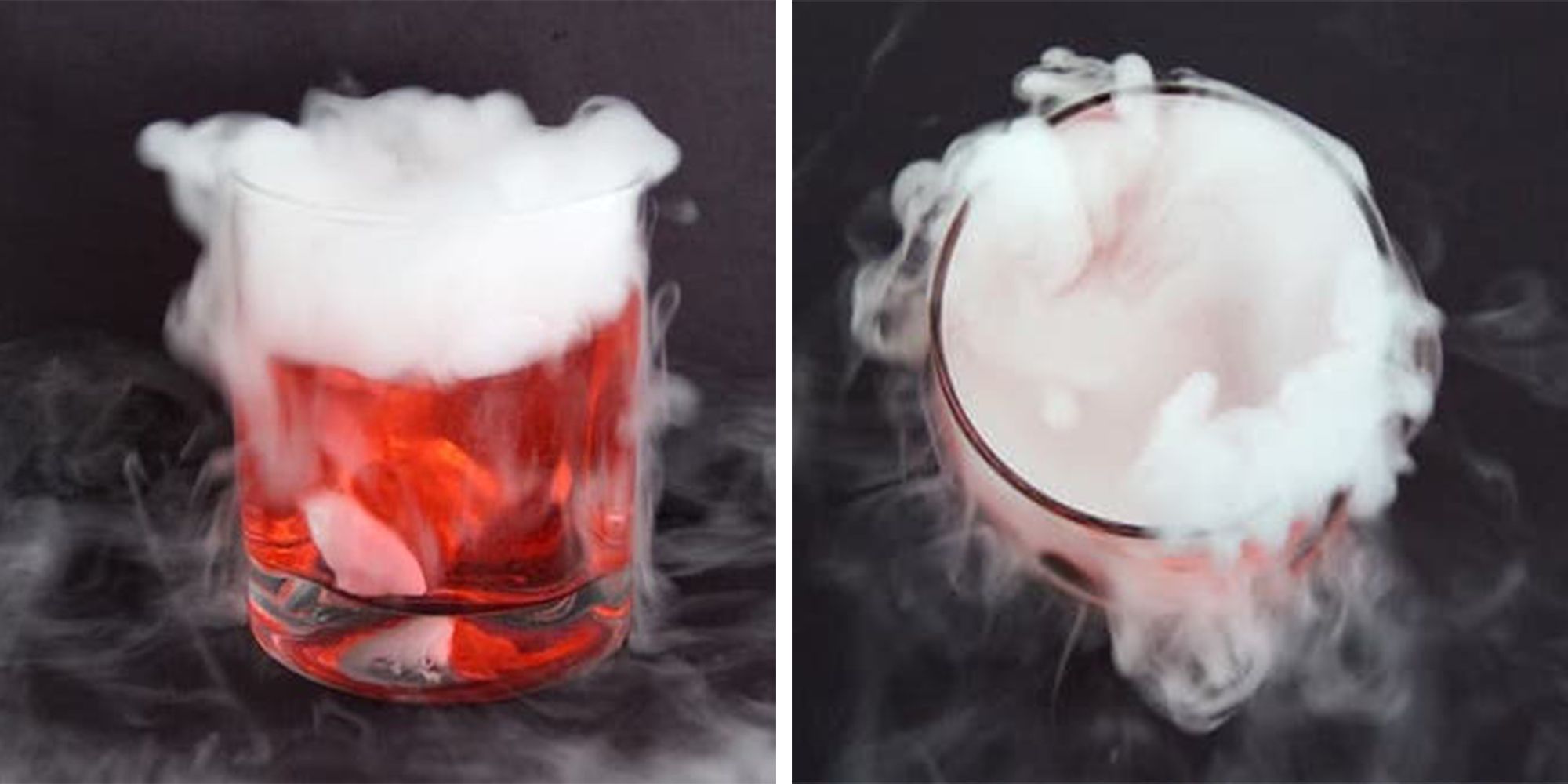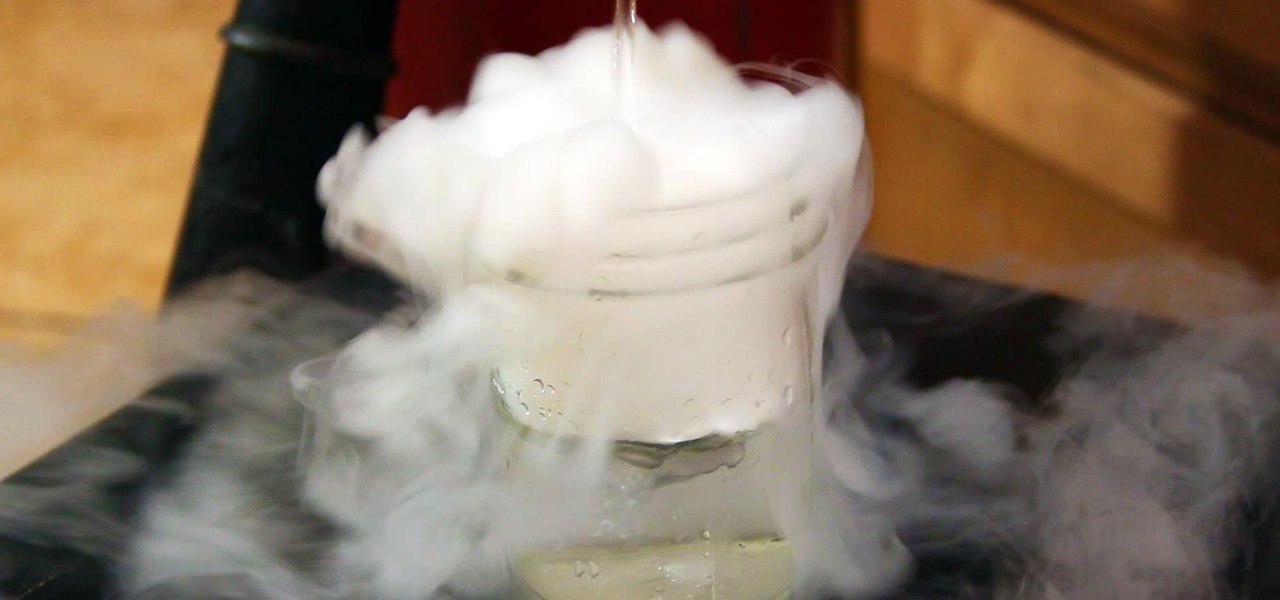You can make dry ice using baking soda and dilute acetic acid (vinegar) as a cost-effective alternative. This method requires an endothermic chemical reaction resulting in a temperature drop.
By combining these household items, you can produce dry ice at home without a fire extinguisher. Dry ice, also known as solid carbon dioxide, is a popular substance used for a variety of purposes, such as preserving perishable items, creating fog effects in theatres, and even in science experiments.
While typically produced using specialized equipment, it is possible to make dry ice at home using simple materials like baking soda and vinegar. This DIY approach can be a convenient and cost-effective way to access dry ice for your specific needs. Let’s explore how to create dry ice without the need for a fire extinguisher.


Credit: mad-science.wonderhowto.com
The Science Of Dry Ice
Making dry ice without a fire extinguisher is possible using everyday items. By combining baking soda and vinegar, an endothermic reaction occurs, resulting in the formation of dry ice. This DIY method is cost-effective and can be a practical alternative when a fire extinguisher is not available.
Understanding The Chemical Reaction
Dry ice is solid carbon dioxide that forms when carbon dioxide gas is compressed and cooled. The process, known as sublimation, occurs when carbon dioxide transitions directly from a solid to a gas without passing through a liquid phase.
Exploring Diy Methods
There are various DIY methods to create dry ice at home without a fire extinguisher. One cost-effective approach involves using a combination of baking soda and dilute acetic acid (vinegar). This chemical reaction is endothermic, resulting in a temperature drop as dry ice forms.
Diy Dry Ice Production
Create dry ice without a fire extinguisher by using a simple DIY method. By combining vinegar and baking soda, you can produce dry ice through an endothermic reaction. This cost-effective alternative involves absorbing energy from the surroundings, resulting in homemade dry ice.
Using Baking Soda And Vinegar
Making dry ice at home is possible with simple ingredients like baking soda and vinegar. This method involves a chemical reaction that results in the formation of carbon dioxide (CO2) gas.
Utilizing A Co2 Fire Extinguisher
If you have access to a CO2 fire extinguisher, you can also produce dry ice. By releasing the CO2 gas from the extinguisher into a container, you can create dry ice through a rapid depressurization process.
Safety Measures And Alternatives
When making dry ice without a fire extinguisher, it’s important to prioritize safety measures. Additionally, it’s worthwhile to explore alternative methods for creating dry ice.
Handling Dry Ice Safely
Before handling dry ice, it’s crucial to wear insulated gloves to prevent skin injuries. Never touch dry ice directly with bare hands as it can cause frostbite. Furthermore, always store dry ice in a well-ventilated area, as it releases carbon dioxide gas. Do not store it in air-tight containers to prevent pressure build-up. When transporting dry ice, ensure proper ventilation in the vehicle to avoid carbon dioxide accumulation. Lastly, always handle dry ice carefully and be mindful of its extreme cold temperature, which is around -109.3°F (-78.5°C).
Alternatives For Dry Ice
- Gel packs can serve as a suitable alternative to dry ice for keeping items cool. Proper insulation with polystyrene foam will ensure effective cooling for perishable goods during transportation.
- Using a dehumidifier to dry out a large block of wet ice is an alternative method for creating dry ice at home. After a few hours, the wet ice transforms into dry ice.
- Another alternative for producing dry ice involves employing baking soda and dilute acetic acid (vinegar), as this cost-effective method facilitates dry ice creation through an endothermic reaction.
Applications And Uses
Dry ice is a versatile substance that has a wide range of applications and uses. Due to its unique properties, it can be used in various industries and for various purposes. In this section, we will explore the innovative applications of dry ice and creative uses for dry ice at home.
Innovative Applications Of Dry Ice
Dry ice has several innovative applications in different industries:
- Transportation: Dry ice is commonly used in the transportation of perishable goods. It helps maintain a low temperature and keeps the items fresh.
- Cleaning: Dry ice blasting is a popular method for cleaning various surfaces. It uses dry ice pellets that sublimate upon impact, leaving no residue behind.
- Food and Beverage: Dry ice is used for flash freezing foods, creating ice cream or carbonated drinks, and preserving fruits and vegetables during shipping.
- Medical and Pharmaceutical: Dry ice is often used for transporting and storing medical supplies, vaccines, and laboratory samples at extremely cold temperatures.
- Theatrical Effects: Dry ice is commonly used in theater productions and concerts to create smoke or fog effects.
- Fishing and Hunting: Dry ice can be used to preserve bait or meat while fishing or hunting in remote locations.
Creative Uses For Dry Ice At Home
Dry ice can also be utilized in various creative ways at home:
- Halloween Decorations: Create spooky effects by using dry ice in cauldrons, jack-o’-lanterns, or fog machines for a haunted ambiance.
- Cocktail and Beverage Enhancements: Add a dramatic touch to your drinks by dropping small pieces of dry ice into cocktails or punch bowls. Ensure you handle it with care and allow it to completely sublimate before consuming.
- Science Experiments: Use dry ice to create eye-catching science experiments, such as making bubbles that sink, creating mini explosions, or producing impressive fog effects.
- Dry Ice Cream: Make your own unique ice cream using dry ice to create a quick and refreshing frozen treat.
- Pest Control: Use dry ice to suffocate and eliminate pests, such as mosquitoes, by placing it in standing water or near their breeding grounds.
- Fruit Preservation: Extend the shelf life of your fruits by placing them in a container with dry ice. The cold temperature will slow down the ripening process.
With these innovative applications and creative uses, dry ice can bring excitement and practicality to various aspects of your life.
Environmental Impact And Conclusion
Discover the eco-friendly way to produce dry ice without a fire extinguisher. Create this cooling agent using a simple chemical reaction that doesn’t harm the environment. Safely make your own dry ice at home while minimizing your carbon footprint.
Sustainability Of Dry Ice Production
When it comes to the environmental impact of dry ice production, it is important to consider the sustainability of the process. Traditional methods of making dry ice involve using fire extinguishers, which release harmful chemicals into the atmosphere and contribute to air pollution. However, there are alternative methods that can be more environmentally friendly.
One sustainable approach to dry ice production is using carbon dioxide captured from industrial processes. This carbon dioxide is then converted into dry ice through a process called sublimation, where it turns directly from a solid to a gas without going through a liquid state. This method allows for the reuse of carbon dioxide that would otherwise be emitted into the atmosphere, reducing the overall carbon footprint.
Another sustainable option is to make dry ice using food-grade sources of carbon dioxide, such as from breweries or fermentation facilities. This not only eliminates the need for fire extinguishers but also creates a closed loop system, where carbon dioxide is produced and converted into dry ice within the same industry. This reduces the need for transportation and minimizes emissions associated with the production and distribution of dry ice.
Concluding Remarks
In conclusion, it is possible to make dry ice without a fire extinguisher by using more sustainable methods. By utilizing carbon dioxide captured from industrial processes or food-grade sources, we can reduce the environmental impact of dry ice production. These alternative methods not only minimize air pollution but also create a more closed-loop system, reducing the carbon footprint and promoting sustainability.

Credit: www.popularmechanics.com

Credit: mad-science.wonderhowto.com
Frequently Asked Questions For How To Make Dry Ice Without A Fire Extinguisher
Can You Make Dry Ice With Baking Soda?
You can make dry ice with baking soda and dilute acetic acid. This cost-effective method uses a chemical reaction, resulting in dry ice.
What Can I Use Instead Of Dry Ice?
Gel packs are a good alternative to dry ice for shipping perishable food items. They provide insulation when packed well with polystyrene foam.
Can You Make Dry Ice Out Of Co2?
Yes, you can make dry ice out of CO2 by using baking soda and dilute acetic acid (vinegar). This method is cost-effective and endothermic, resulting in a temperature drop. Gel packs are a good alternative to dry ice for shipping perishable food items.
How Much Dry Ice Do You Get From A Fire Extinguisher?
A fire extinguisher typically yields around 2-4 pounds of dry ice.
Can You Make Dry Ice Without A Fire Extinguisher?
Using alternative methods, such as combining baking soda and vinegar, you can create dry ice at home without a fire extinguisher. The process requires an endothermic reaction, resulting in a temperature drop.
Conclusion
Creating dry ice without a fire extinguisher is possible using everyday items like baking soda and vinegar. This method provides a cost-effective solution to produce dry ice at home. Additionally, gel packs can serve as a suitable alternative for shipping perishable items.
With this knowledge, you can easily make dry ice for various needs.